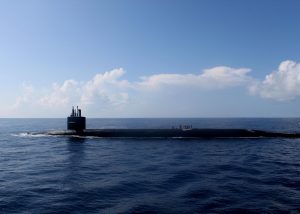According to the latest Yearbook from the Stockholm International Peace Research Institute (SIPRI), there has been a marginal decline in the total number of nuclear warheads in the world. On the other hand, there has been considerable effort at modernizing nuclear inventories among several nuclear weapon states. Despite the START nuclear arms control agreement between the United States and Russia, which was extended in February this year, the prospects for broader multilateral discussions and arms control remain quite limited.
The possibility of additional bilateral arms control measures between the U.S. and Russia “remain poor,” according to Dr. Hans Kristensen of SIPRI. Given the global and Asian power transition and the competitive nature of geopolitics, the salience of nuclear weapons in the national security strategies of at least some of the nuclear weapon states may be increasing. This means that developing new arms control measures, especially at multilateral levels, has become more challenging.
The SIPRI Yearbook notes that as of 2021, the nine nuclear powers in the world possess 13,080 nuclear weapons. Out of this, 3,825 are deployed, with around 2,000 of them in “a state of high operational alert.” With the U.S. and Russia engaged in dismantling old retired nuclear warheads, there has been a small decline in the overall size of the nuclear inventories. Nevertheless, there are continuing efforts by the U.S. and Russia, as well as other nuclear weapon states, to upgrade their nuclear capabilities by improving warheads, delivery vehicles (missiles and aircraft), and nuclear production facilities.
U.S. efforts at deploying new low-yield warheads on its nuclear-powered ballistic missile submarines (SSBNs) is a case in point. In January 2020, the U.S. deployed its new W76-2 low-yield Trident submarine warhead. The Trump administration proposed the new warhead in its Nuclear Posture Review (NPR) in February 2018, claiming a need to enhance U.S. deterrence capability. The NPR argued that the W76-2 was needed in order to “help counter any mistaken perception of an exploitable ‘gap’ in US regional deterrence capabilities.” Similarly, the U.S. is also reported to be making progress with its plans for the deployment of a new nuclear-armed sea-launched cruise missile.
Meanwhile, Russia has been enhancing its nuclear delivery systems too. According to the SIPRI Yearbook, Russia has “added a fourth Borei-class SSBN to its fleet, and increased its number of Yars and Avangard intercontinental ballistic missiles, land-attack Kalibr SLCMs and Iskander short-range missiles.” Another recent report indicated that the Kalibr missiles, which can be deployed on a number of platforms, from small surface combatants to submarines, have emerged as a “very flexible asset that enables a long list of operational scenarios.” The report suggested that by 2024, the Russian Navy could be operating up to 85 Kalibr-capable surface combatants and submarines with over 1,200 launch cells across its fleets and flotilla.
China has also been pushing its nuclear expansion and modernization efforts. According to the “Nuclear Notebook” report on “Chinese Nuclear Forces, 2020,” China has continued to deploy the DF-26 intermediate-range ballistic missile (IRBM), and replaced the older road-mobile DF-31A ICBM launchers with “the more maneuverable DF-31AG launcher.” The report also noted that China is in the early stage of deploying the new DF-41, a road- and rail-mobile ICBM with multiple independently targetable reentry vehicles (MIRVs). China is also stepping up its naval and aerial arms of the nuclear triad, including the development of an air-launched ballistic missile possibly with nuclear capability.
The SIPRI report notes that both India and Pakistan are also expanding as well as modernizing their nuclear capabilities including their delivery systems. Last year, the Indian Nuclear Forces 2020 report stated that India is developing “at least three new weapon systems” that would either “complement or replace existing nuclear-capable aircraft, land-based delivery systems, and sea-based systems.” Given the contested nature of China-India relations, especially since the Galwan clash of June 2020, the Indian efforts at developing effective deterrence capabilities, both in the conventional and strategic domains, could see an acceleration. Although the Pakistan Nuclear Forces report is a few years old, it also notes continuing enhancements in the country’s nuclear arsenal. Finally, North Korea is reported to be expanding its nuclear arsenal along with continued development of short- and long-range ballistic missiles.
Even as nuclear modernization efforts and expansion continue, the Treaty on the Prohibition of Nuclear Weapons (TPNW) entered into force in early 2021. But this is of no comfort because none of the nuclear armed states are parties to it and it is unlikely that the treaty will get any support from these states in the near future. As Matt Korda of SIPRI put it, this “highlights the growing divide between the nuclear-armed states, which are all investing in the long-term future of their nuclear forces, and other countries that are impatient to see progress on nuclear disarmament promised by the Nuclear Non-Proliferation Treaty.”
The current trends in Asian and global politics offer no solace as far as the nuclear trajectory is concerned. China has rejected calls to join multilateral discussions on a possible post-INF mechanism. This means China’s modernization efforts will continue, which could have a cascading effect on India, and following from that, on Pakistan. In fact, the worsening of relations of the West with China and Russia, as well as the growing adversarial nature of relations between India and China, will likely mean that the pace of nuclear modernization and expansion will continue.

































